#herbology
Explore tagged Tumblr posts
Text









#naturecore#aesthetic#plantcore#plantlife#garden cottage#plant aesthetic#nature vibes#cottage aesthetic#cottagestyle#plants#cottage vibes#flowercore#herbs#herbalism#grandmacore#countrycore#cottage garden#farming#harvest#gardencore#botany#forests#herbology#mushroomcore#forestcore#cottagecore
706 notes
·
View notes
Text

Marylily during herbology class 🌷
#marauders#marauders era#james potter#atyd marauders#marauders fanart#harry potter#sirius black#jegulus#remus lupin#prongs#marylily fanart#marylily#mary macdonald fanart#mary x lily#mary mcdonald#mary macdonald#lily evans fan art#lily evans fanart#lily evans#lily potter#harry potter fan art#wolfsar fanart#herbology#lily x mary#hogwarts fanart#gryffindor#harry potter fanart#marauders era fanart
758 notes
·
View notes
Text

★ sun herbs: sunflower – radiates positivity, promotes self-confidence cinnamon – ignites passion, enhances abundance and energy bay leaf – aids manifestation, carries wishes into reality rosemary – offers protection, sharpens focus and memory calendula – heals emotional wounds, soothes and nurtures saffron – boosts vitality, enhances joy and inner light chamomile – calms anxiety, promotes emotional balance marigold – attracts success, shields against negativity st. john’s wort – lifts spirits, wards off dark energies heliotrope – aligns with higher self, enhances creativity

★ moon herbs: jasmine – deepens intuition, strengthens emotional bonds mugwort – aids dreamwork, opens the door to hidden truths willow – supports resilience, aids emotional adaptability chamomile – soothes emotions, promotes restful sleep silverweed – enhances feminine energy, aligns with lunar cycles moonflower – strengthens intuition, connects with lunar magic white poppy – aids relaxation, promotes deep dreaming gardenia – enhances peace, attracts loving energy lotus – symbolizes spiritual awakening, deepens meditation cucumber – cools emotional turmoil, promotes cleansing

★ mercury herbs: lavender – clears mental fog, enhances communication peppermint – sharpens focus, energizes and refreshes dill – brings luck in communication, promotes clear thinking parsley – aids wisdom, supports adaptability and flexibility marjoram – soothes tension, promotes harmonious interactions fennel – boosts clarity, sharpens intellect anise – enhances mental acuity, aids divination caraway – supports decision-making, promotes protection in negotiations horehound – clears mental blocks, aids in clarity of speech lemongrass – refreshes the mind, boosts focus and energy

★ venus herbs: rose – fosters love, promotes emotional healing hibiscus – stirs passion, enhances sensuality yarrow – protects emotional energy, promotes relationship harmony apple blossom – attracts love, supports fertility thyme – inspires beauty and confidence, promotes love violet – fosters self-love, strengthens emotional connection vanilla – soothes and attracts, promotes romantic connection strawberry – enhances sweetness in relationships, attracts love lilac – cleanses and harmonizes, attracts peace daisy – promotes new beginnings, fosters youthful energy

★ mars herbs: ginger – ignites motivation, amplifies personal power cayenne – boosts courage, clears negativity basil – strengthens resolve, promotes protection nettle – shields energy, enhances strength garlic – wards off negativity, offers spiritual protection mustard – aids in breaking barriers, sparks action onion – deepens protection, clears emotional blockages horseradish – cuts through stagnation, empowers decisiveness radish – energizes boldness, enhances physical vitality dragon’s blood – intensifies spellwork, strengthens protection

★ jupiter herbs: bay leaf – supports manifestation, attracts success sage – clears negativity, aligns with wisdom nutmeg – promotes luck, supports spiritual growth dandelion – encourages resilience, fosters hope and expansion hyssop – cleanses spiritually, enhances prosperity clove – attracts wealth, strengthens focus and intention borage – inspires courage, supports abundance agrimony – protects spiritually, aids in overcoming obstacles oak – symbolizes strength, enhances stability and growth cedar – purifies space, invites positive opportunities

★ saturn herbs: cypress – aids transitions, promotes long-term resilience patchouli – grounds energy, attracts material stability comfrey – protects and heals, strengthens foundations myrrh – enhances spiritual authority, supports shadow work horsetail – builds endurance, supports long-term success ashwagandha – reduces stress, fosters inner discipline ivy – supports binding and longevity, enhances resilience juniper – wards off negativity, purifies energy valerian – calms and centers, supports spiritual grounding knotweed – strengthens boundaries, aids focus on goals

★ uranus herbs: eucalyptus – clears blockages, promotes renewal and freedom lemon balm – soothes nerves, supports adaptability mullein – empowers independence, protects energy star anise – boosts creativity, sharpens intuition dandelion root – anchors during upheaval, supports grounded change fennel – promotes resilience, enhances innovation burdock – protects against negativity, fosters transformation nettle seed – energizes and protects, aids spiritual growth hops – calms restlessness, promotes visionary thinking damiana – stimulates creativity, enhances spiritual freedom

★ neptune herbs: mugwort – supports dreamwork, enhances spiritual vision blue lotus – deepens meditation, supports spiritual enlightenment seaweed – aids emotional healing, connects with subconscious energies amethyst flower – promotes calm and intuition, clears confusion lemon verbena – enhances dream clarity, soothes emotional unrest elderflower – protects spiritually, promotes transformation poppy – enhances dream magic, supports relaxation valerian – calms anxiety, supports spiritual focus lotus root – symbolizes rebirth, deepens spiritual practices watercress – purifies emotions, promotes renewal

★ pluto herbs: black pepper – banishes negativity, strengthens transformative work wormwood – enhances shadow work, aids in deep self-exploration mandrake – protects energetically, supports rebirth and renewal basil – clears old patterns, empowers manifestation nightshade – symbolizes deep transformation, supports mystical work hellebore – aids shadow work, supports personal evolution skullcap – calms intense emotions, fosters resilience blackthorn – protects against harm, supports boundary-setting belladonna – deepens mystical connection, supports profound change henbane – enhances spiritual exploration, aids in releasing toxic ties

#astrology#astrology observations#astro observations#astrological associations#planetary magick#witchcraft#herbology
196 notes
·
View notes
Text


February's plant for my herbologist tier is the Himalayan blue poppy! This rare alpine plant grows in high altitudes, in misty mountain meadows. It's beauty and scarcity make it an ephemeral sight.
If you'd like these rewards, the mini poppy postcards and double sided info and folklore card with facts about this plant, please consider signing up to my herbologist tier!
I've been obsessed with this gorgeous bloom for years, so getting to draw it, and learn all about and its fascinating plant cousins had me riveted!!
#botanical illustration#illustration#witch aesthetic#dark acamedia#herbology#plants#plantblr#plant art#dark acadamia aesthetic#i love m. horridula#just look at that spikey little child 🥺
565 notes
·
View notes
Photo

Hello!!! It’s me again :3c I like to think that the Potion’s Professor and the Herbology's Professor have a close friendship, so I did a drawing of one of the first time where Snape needed some ingredients for his potions as the new Potion Professor (He’s about 21 y/o here)
Hope you like it!
#harry potter fanart#harry potter#professor snape#pro snape#severus art#severus snape#severus snape art#severus snape fanart#young severus snape#slytherin#slytherpride#hufflefluff#sprout#professor sprout#pomona sprout#herbology#snape fanart#snape fanfiction#young snape#young severus#pomona sprout fanart
1K notes
·
View notes
Text

#cozycore#cottage life#cottagecharm#cottagestyle#grandma aesthetic#plants#warmcore#countrycore#cottage garden#gardencore#herbalmedicine#herbology#herbalism#herbal magick#plants and herbs#plant core#plant aesthetic#plantblr#mushroom aesthetic#mushroomcore#mushrooms#spell jars#spell jar#kitchen witch#witches#witchcraft#cottage witch#earth witch#kitchen witchcraft#green witchcraft
933 notes
·
View notes
Text



🪴🌵🌿
I wish there were more classroom shenanigans. I love them so much 😭
#hogwarts legacy#hogwarts legacy fanart#hogwarts legacy mc#sebastian sallow#everett clopton#leander prewett#mirabel garlick#herbology#mimbulus mimbletonia#lyla estaris
522 notes
·
View notes
Text
Day 29: Pollen (Part 1)
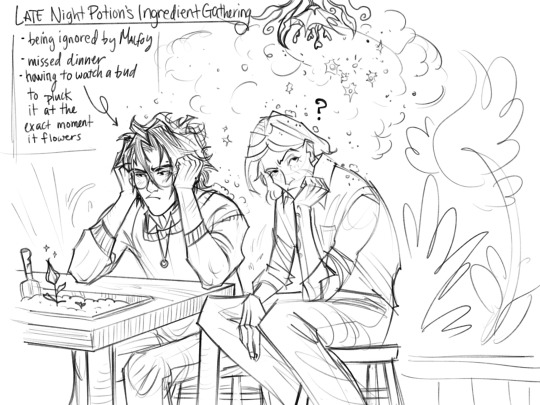
“Wait what’s this, now? I feel… odd.”
Stay tuned for Part 2…
#boshhptober2023#art#drawing#sketch#artists on tumblr#doodle#harry potter#drarry#draco malfoy#8th year#hogwarts#herbology#what is with me and magical plants and these two#hp art#drarry art#comic art#boshdraws
538 notes
·
View notes
Text
Show You How Much I Care



Lorenzo Berkshire x fem reader
Summary: Little things Lorenzo does to show y/n how much he cares
w/c: 1069
Lorenzo Berkshire, the charming and enigmatic member of the Slytherin crew, had always had a knack for reading people. Yet, when it came to Y/N, a girl who seemed to shine with an inner light, he found himself captivated. Unlike many others at Hogwarts, Y/N was genuine and kind, navigating the social landscape with refreshing authenticity. Lorenzo admired her from afar and, over time, felt a growing desire to show her how much he cared.
The Care Package
One day, after overhearing Y/N mention her struggles with schoolwork, Lorenzo decided to help. He discreetly gathered a selection of books and notes that could aid her studies. Alongside these, he added a few of her favorite snacks—a small detail he had picked up from observing her during meals.
That evening, Y/N returned to her dormitory to find a basket waiting for her. Inside was a note written in Lorenzo's neat handwriting:
"For the times when things get tough. Take care, Y/N. - Enzo"
Y/N felt a warm flush spread across her cheeks as she read the note. She had always seen Lorenzo as the laid-back, cool member of his group, but this thoughtful gesture revealed a depth she hadn't expected. It was a small act, but it showed that he had been paying attention and cared about her well-being.
The Potions Class Incident
During a challenging Potions class, Professor Snape assigned the students a complex potion requiring precise timing and careful handling. Y/N, who generally enjoyed Potions, found herself unusually nervous, fumbling with the ingredients. She glanced at her notes, trying to recall the exact sequence, but her anxiety clouded her memory.
Lorenzo, at the next table, noticed her distress. He watched as she hesitated, holding a vial of powdered unicorn horn uncertainly. Understanding the importance of timing, Lorenzo quietly tapped his quill on the edge of her table, a subtle signal they had developed for moments like this.
Y/N looked over, catching his eye. Lorenzo gave a slight nod, glancing at the clock. She understood and added the powder just as the potion turned the right shade of blue. Lorenzo continued to help subtly, passing her a vial of powdered moonstone when she realized she was running low and mouthing a reminder about the temperature adjustment.
As the class ended, Professor Snape evaluated their potions. He paused at Y/N's cauldron, inspecting the brew with his usual critical eye. "Adequate," he muttered, a rare compliment from him.
Relieved, Y/N turned to Lorenzo as they packed up. "Thank you," she whispered, her eyes filled with gratitude. "I was so nervous."
Lorenzo smiled, a warm, reassuring look in his eyes. "You had it. Just needed a bit of confidence."
Y/N couldn't help but smile back. His quiet support had been comforting, making her feel seen and valued.
The Herbology Lesson
Later, during a particularly tricky Herbology lesson, Y/N struggled with a difficult plant. Lorenzo, who had a surprising knack for Herbology, noticed her frustration and stayed behind after class.
"Need a hand?" he asked, offering a friendly smile.
Surprised, Y/N nodded. Lorenzo patiently guided her through the process, showing her the correct technique. Under his calm guidance, the plant responded, and Y/N felt a wave of relief and accomplishment.
"Thanks, Lorenzo," she said, grateful for his help.
He shrugged modestly. "Anytime. Can't let you struggle alone."
As the days passed, Y/N couldn't help but notice all the little things Lorenzo did for her. He'd save her a seat in the library, offer to carry her books when they were headed in the same direction, and even conjured a small bouquet of flowers during a particularly rough day. These small acts of kindness were so thoughtful and consistent that she found herself wondering why he was doing them. Was it just his nature, or was there something more?
The Astronomy Night
Knowing Y/N's love for the stars, Lorenzo planned a special surprise. One clear night, he invited her for a walk. They ended up at the Astronomy Tower, where he had set up a blanket and a small telescope.
As they lay under the stars, Lorenzo pointed out constellations and shared stories. His effort to create this moment touched Y/N deeply, revealing a thoughtful and caring side she had come to cherish.
"Lorenzo, this is wonderful," Y/N said, moved by his gesture. "Thank you."
He smiled, his eyes reflecting the starlight. "I wanted to do something special for you. You deserve it."
Y/N felt warmth spread through her. She hesitated, then asked the question that had been on her mind. "Why do you do all these things for me, Lorenzo?" she asked softly, turning to look at him directly. "You've been so kind and attentive... it's more than anyone's ever done for me."
Lorenzo paused, his expression thoughtful. He met her gaze, his eyes sincere. "Because you matter to me, Y/N," he began, his voice gentle but firm. "I've seen how kind and genuine you are, and I admire that. I wanted to show you that someone appreciates you for who you are, not just for what you do or what house you're in. And... because I care about you. A lot."
He paused, gathering his thoughts. "I know I'm not the best with words or grand gestures, but I believe in showing my feelings through actions. That's why I wanted to show you how much I care, in my own way. Whether it's helping you in Potions, making sure you have what you need, or just spending time together like this. It's all because I want you to know you're special to me."
Y/N's heart fluttered at his words. There was a sincerity in his voice that made her believe every word. She felt a mix of emotions—surprise, joy, and a deep warmth she couldn't quite describe.
She reached out, taking his hand. "I had no idea," she admitted, her voice soft. "But... I'm glad. I appreciate everything you've done. It means more than you know."
They sat there, hand in hand, under the vast night sky. Lorenzo's quiet, thoughtful actions had finally come to light, revealing the depth of his feelings. It wasn't about grand declarations or dramatic actions; it was about the little things that showed he genuinely cared. And in that moment, under the stars, Y/N realized just how much Lorenzo meant to her, too.
#slytherin x reader#slytherin boys#fluff#lorenzo berkshire#enzo x reader#enzo berkshire#potions#herbology#astronomy#hogwarts school of witchcraft and wizardry#cute#lorenzo berkshire x reader#lorenzo berkshire x you#lorenzo berkshire x female reader
115 notes
·
View notes
Text

Tangled 😅💚 / Part 2
Tried a new brush & didn’t spend too much time fixing it bc I got impatient lol.
#I used a paint brush I don’t love it#bob Ross would applaud me for trying tho#hogwarts legacy#millie grey#sebastian sallow#hogwarts oc#hogwarts#hogwarts legacy mc#mc x sebastian sallow#sebastian x mc#hogwarts legacy fanart#sebastian sallow fanart#Herbology
50 notes
·
View notes
Text

Herbal manuscript, Male Mandrake, about 1440, Milan, Italy. London, The British Library, Ms Sloane 4016
83 notes
·
View notes
Text
GOING STEADY | NEVILLE LONGBOTTOM | HEADCANONS

⋆⁺。˚⋆˙‧₊☽ ◯ ☾₊‧˙⋆˚。⁺⋆ ⋆⁺。˚⋆˙‧₊☽ ◯ ☾₊‧˙⋆˚。⁺⋆
raising a plant together in herbology
defending him in potions class against snape
studying together by the lake and taking in the fresh air
fresh cut bouquets of flowers; neville then explains their species in detail
genetically modifies the color of a flower to make it as bright and beautiful as you are
clumsy mistakes are made but you make him not feel embarrassed for causing them
talking softly so no one can ever reuse the words of affirmation and love he spoke to you
ignoring every compliment you give him because he only thinks compliments fit you
reminding him of important tasks or upcoming events so he has one less thing to keep track of
cherishing every moment with you because when the final moment comes he will have wanted to appreciate every second with you
wiping up his spilled drinks and having a stain removal charm on standby
pressing flowers for you and making a scrapbook out of them
always having fresh fruit as a treat, but he peels it for you so your hands don’t get dirty
⋆⁺。˚⋆˙‧₊☽ ◯ ☾₊‧˙⋆˚。⁺⋆ ⋆⁺。˚⋆˙‧₊☽ ◯ ☾₊‧˙⋆˚。⁺⋆
pictures found on pinterest, edits made by AMBITIOUSPOTIONS are mushed together on canva
#neville longbottom#neville longbotton x reader#Harry Potter#dating headcanons#headcanons#headcanon#green aesthetic#nature aesthetic#herbology#gryffindor#slytherin#hufflepuff#ravenclaw#collage edit#aesthetic collage#collage#Neville aesthetic#fanfic#hp fandom#harry potter fanfiction#Harry Potter fandom#fanfiction#fluff#fluff headcanons#vintage#scrapbook#nature scrapbook#fan made#photo edit#green and brown
57 notes
·
View notes
Text

#thelovewitch#lana del rey#witch#witchcraft#cottagecore#nature#lanadelrey#the love witch#herbology#whimsical#whimsicore#whimsigothic#whimsy
110 notes
·
View notes
Text




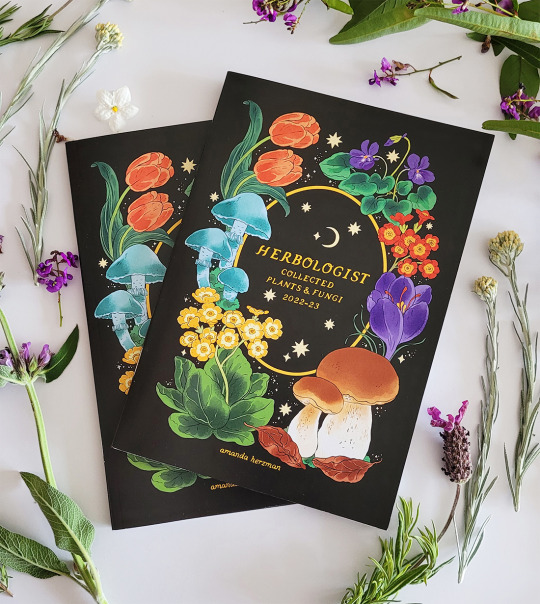

It's been a long long time coming, but all four volumes of the herbologist zine are now in stock! Each zine collects together a year of my patreon plant and fungi rewards. In each book you'll find a year of my exploration, illustration, folklore and scientific facts about the wonderful botanical and fungi filled world around us!
Thanks to the wonderful @mushroomyhouse - who helped me turn this print run into a reality! I could not have done it without them!
Shop link 🌟💖
#boosting is adored!#shop update#shop small#botanical illustration#artists on tumblr#herbology#plantlore#plantblr#small business#plant art#cottageblr#witch aesthetic#folklore
266 notes
·
View notes
Text
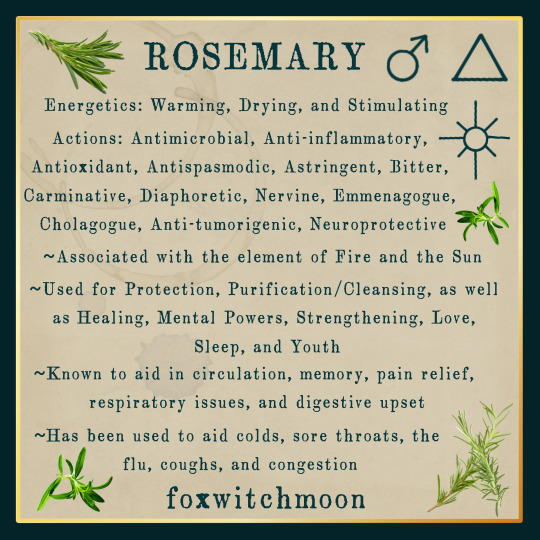
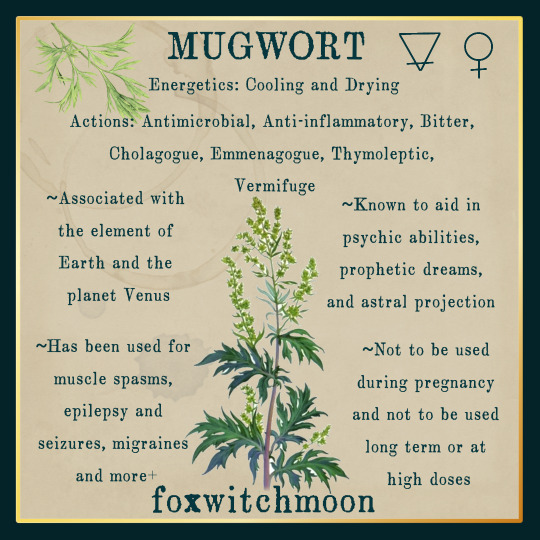
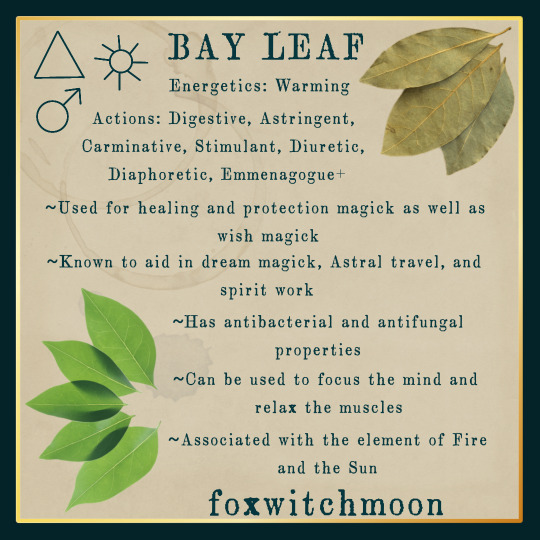
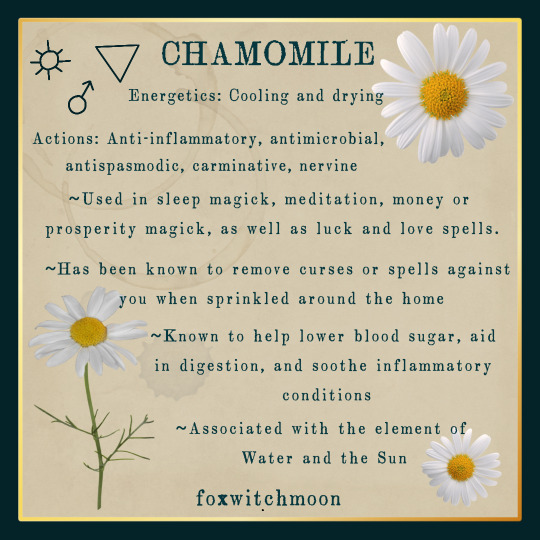

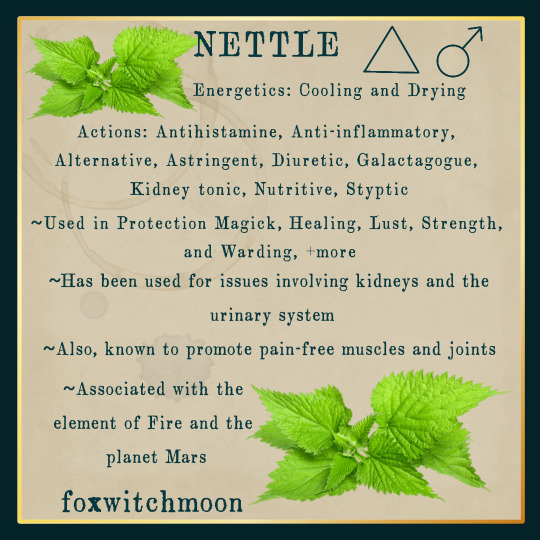
Herbology × Magick🍃
Follow @foxwitchmoon on IG for more🌿🔮🌙🧿🕯🪻🗝✨️
#witchblr#grimoire#witch#witchcraft#witches#occult#plants and herbs#foraging#chakras#herbology#herbalwitch#herbal medicine#herbalism#green witch#eclectic witch#lunar witch#moon magic#rosemary#nettle#dandelion#mugwort#bay leaf#chamomile
739 notes
·
View notes
Text
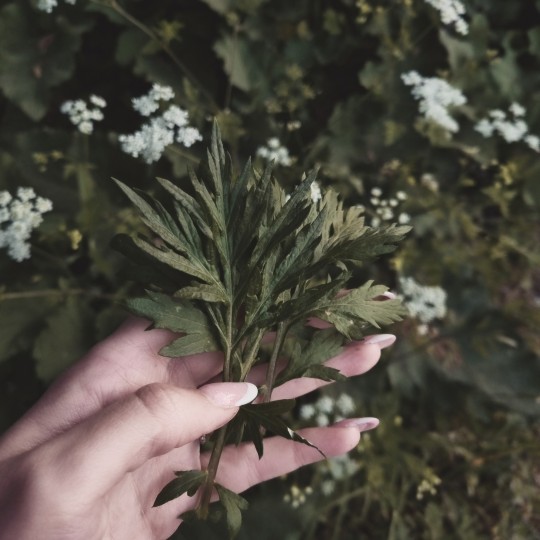

Picking mugwort in the forest at sunrise, gonna have some really sweet dreams tonight 🌿
#nature#flowers#herbs#tea#cottagecore#fairycore#forest witch#witch aesthetic#green witch#green aesthetic#naturecore#my photography#mugwort#witchcraft#potions#herbology#forests
1K notes
·
View notes